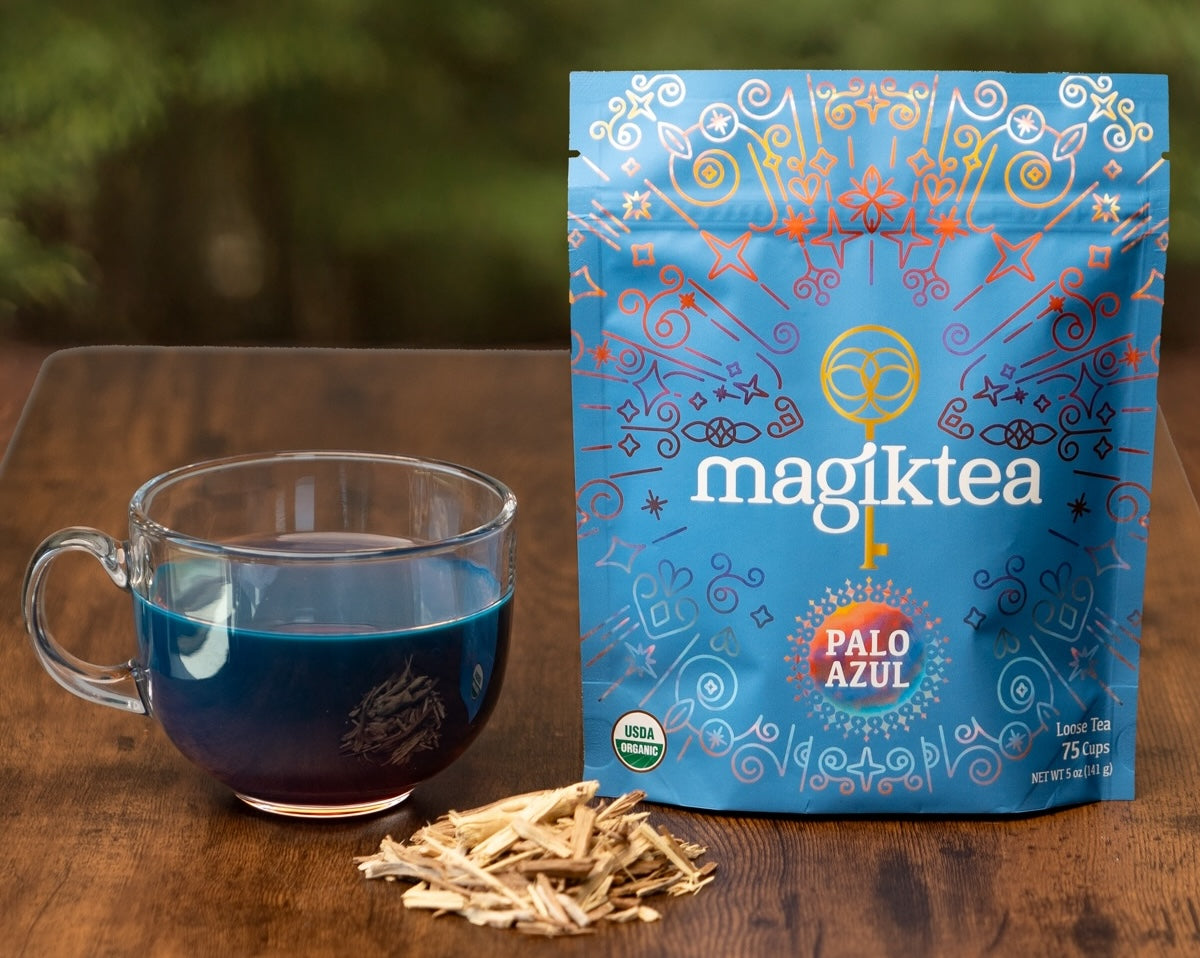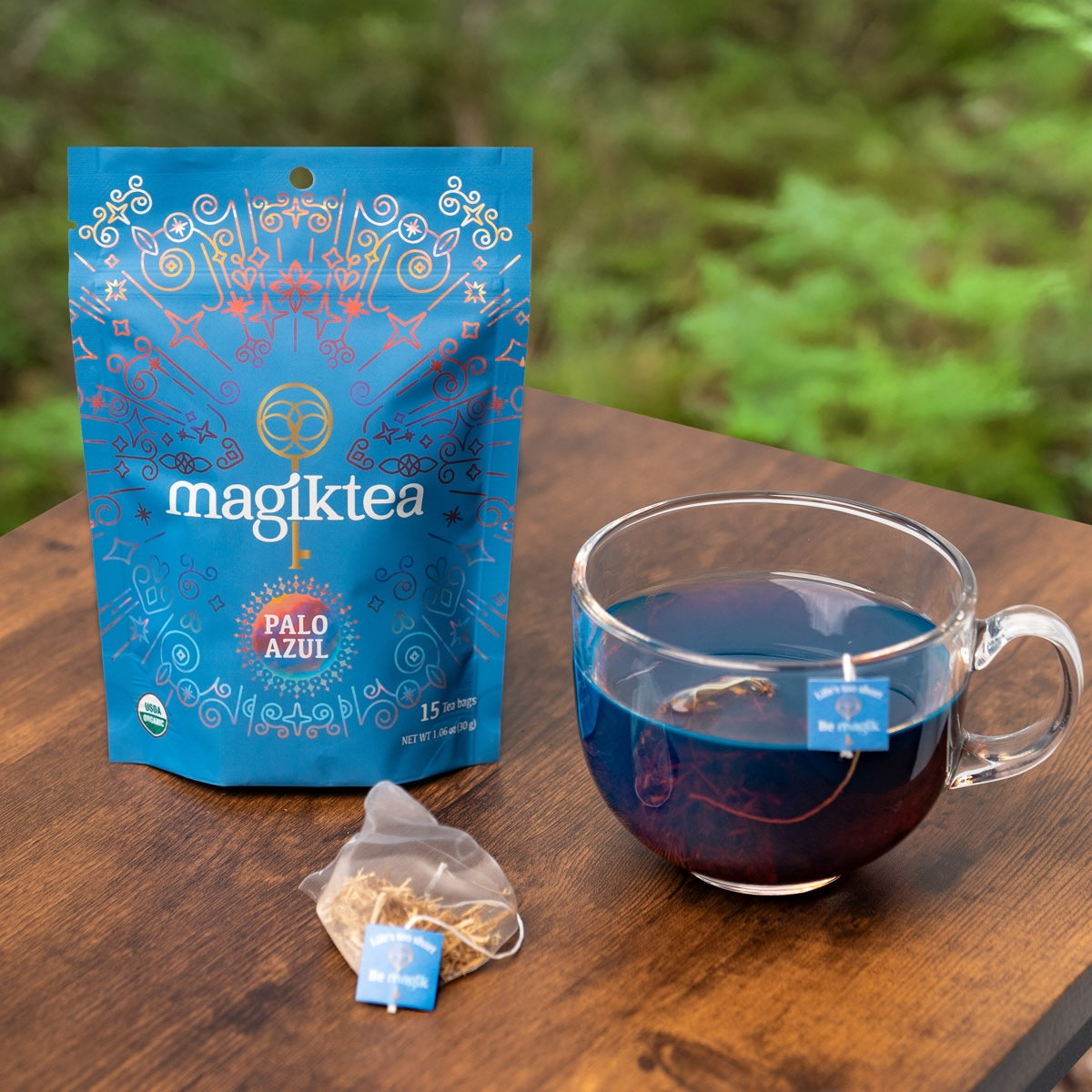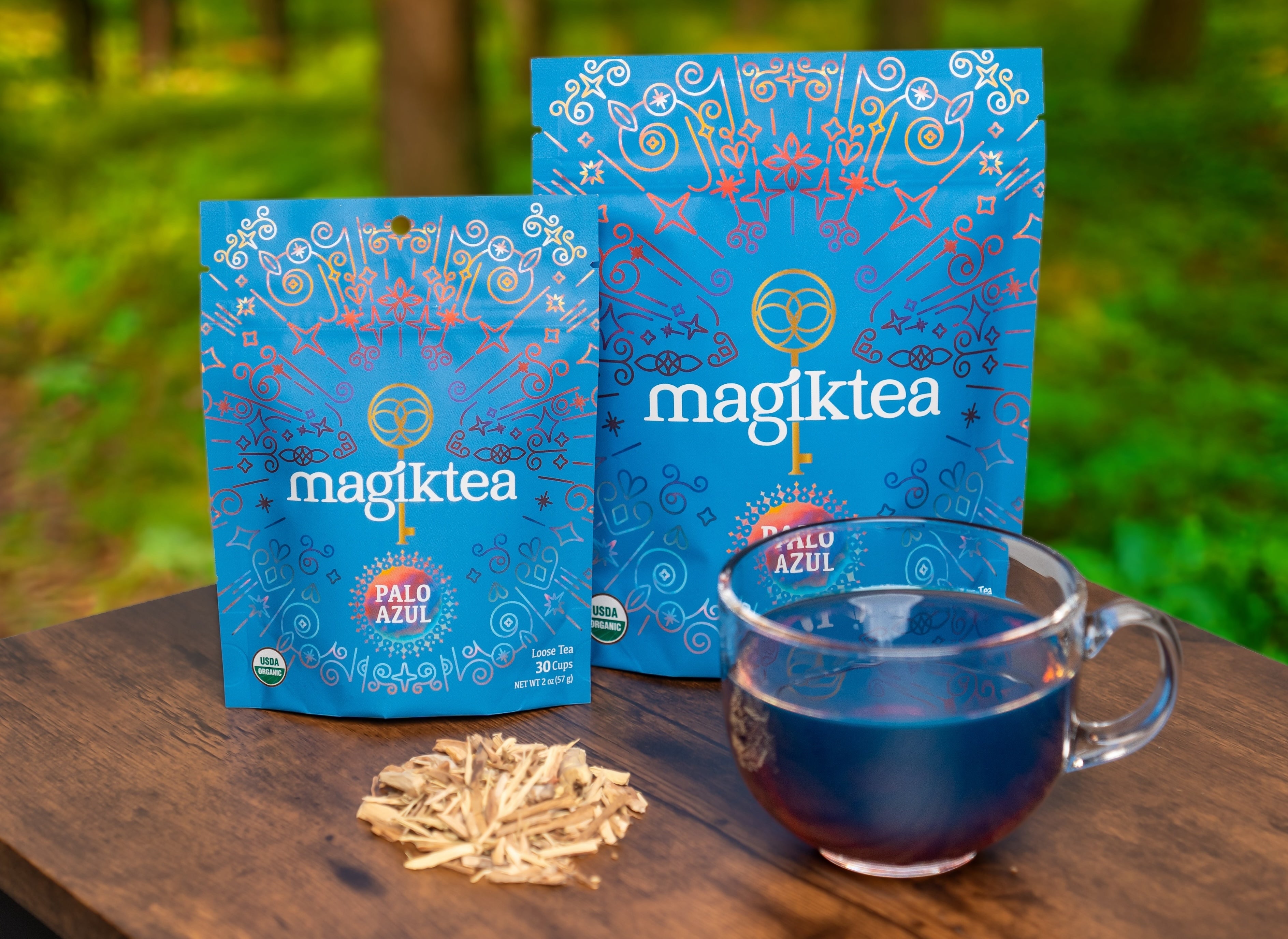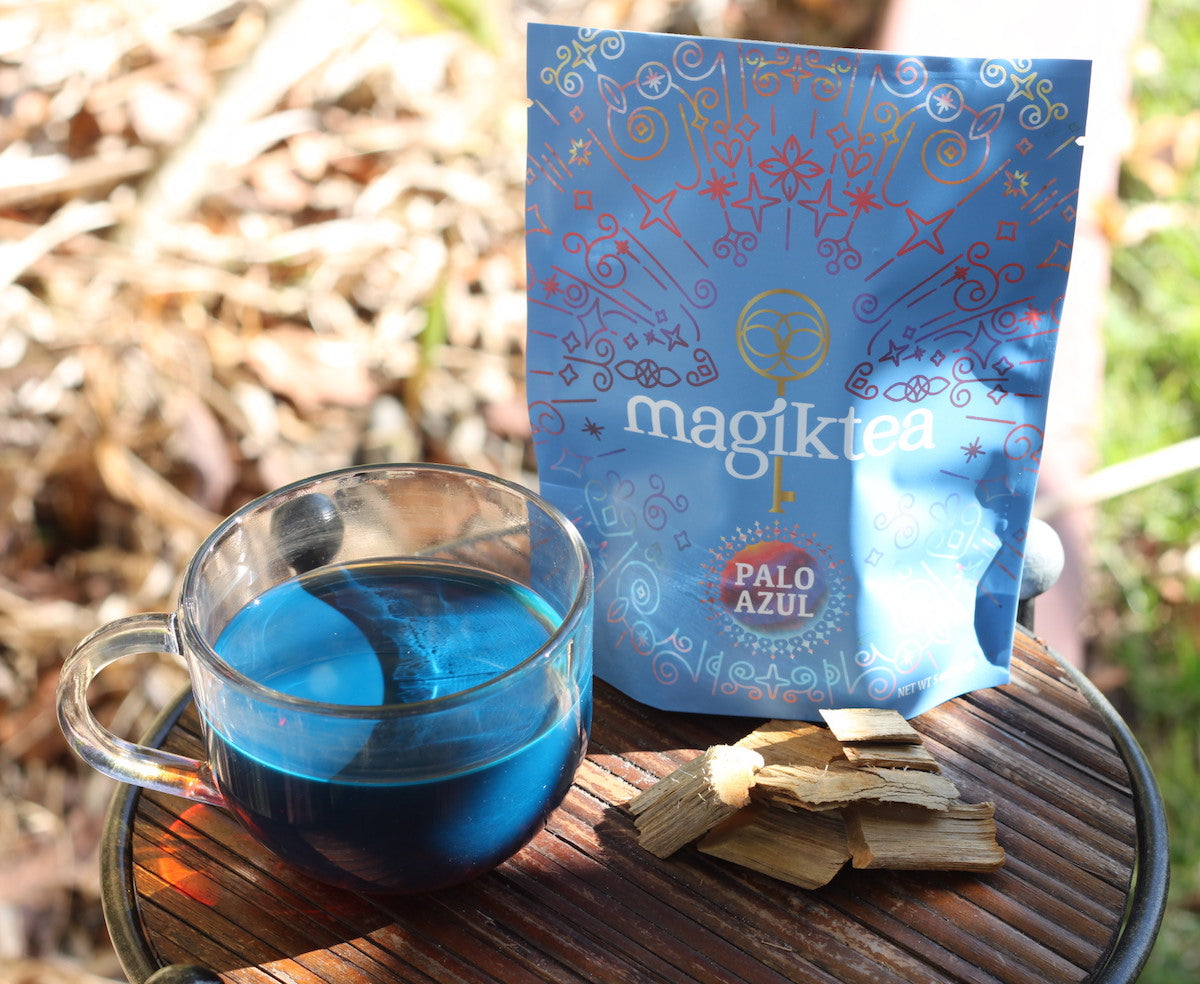The One and Only Kidneywood
There are over 40 studies on palo azul which show that it is antioxidant, anti-inflammatory, alkaline, anti-microbial, diuretic, liver-protective, renoprotective, and more. That's why palo azul has been used as a natural remedy in Mexico for over 500 years to promote kidney & liver health, which is why it's also known as "kidneywood" or "kidney tea".
Palo azul has around 8x more antioxidants (polyphenols) than green tea, so it is great for detoxifying the body and protecting the kidneys & liver from free radicals, oxidative stress, inflammation, lipid peroxidation and heavy metals. Although palo azul is most commonly used for kidney health, it has also become a popular natural remedy for diabetes, arthritis, sciatica, gout, and UTIs.
Studies

Antioxidant
Studies show that palo azul has around 8-26x more antioxidant capacity than green tea and 20x higher than spirulina. Therefore, numerous studies show that palo azul exhibited significant antioxidant activity, it inhibited oxidative stress, free radicals, lipid peroxidation, AGEs and it chelates heavy metals. Studies also show that palo azul increased glutathione, catalase, and superoxide dismutase, which are the body's most important antioxidants and are critical for immune function.

Palo Azul Has 8x More Antioxidants Than Green Tea
This 2021 study found that palo azul tea "can reduce the oxidative stress caused by the imbalance between reactive oxygen species (ROS) because of its free radical scavenging activity. The polyphenolic compounds present in (palo azul) may protect the insulin-secreting cells from oxidative stress."

This 2014 study found that "(palo azul) possesses considerable antioxidant activity with reactive oxygen species (ROS) scavenging activity and demonstrated an anti-AGEs and inhibits oxidative stress."
This 2016 study concluded the following: "Our data indicates that (palo azul) has an ability to reduce oxidative stress through decreasing of lipid peroxidation, antioxidant properties, and increasing radical scavenging enzymes activity, also reduce intracellular reactive oxygen species."

Anti-inflammatory
Numerous studies have shown that palo azul tea exhibited significant anti-inflammatory activity due to its flavonoid rich content. This 2011 study concluded that "these results give support to the use of this plant as an anti-inflammatory in traditional medicine."
A 2018 study concluded that "(palo azul) and its rich-flavonoids fractions inhibited secondary inflammatory reactions" and "also decreased the serum levels of pro-inflammatory cytokines." This 2016 study found that palo azul "exhibited significant anti-inflammatory activity." Moreover, a 2015 concluded the following: "Our data indicate that palo azul exhibited significant anti-inflammatory activity."

Potassium-Saving Diuretic
Diuretics are substances that promote diuresis, which means they increase water excretion (makes you urinate more). Interestingly, a 2016 study showed that palo azul tea is a "potassium-sparring diuretic", meaning that it prevented electrolyte loss during urination because it spared potassium...as opposed to regular diuretics like coffee and green tea. Due to the popularity of palo azul as a diuretic, several studies have evaluated its efficacy and found it to be effective at promoting kidney and urinary tract function.

For example, a 2022 study mentions that "this plant contains polyphenols, flavonoids and alkaloids." This same study suggests that palo azul's "beneficial effects might be associated with diuretic activities, as well as an inhibitory effect on crystallization, nucleation, and aggregation of crystals (kidney stones)."

Polyphenols
Polyphenols are nutrients which plants produce to defend themselves against oxidative stress, inflammation, pathogens, and UV rays, so they're what make palo azul antioxidant, anti-inflammatory, renoprotective, liver-protective, and more. Polyphenols are also what give green tea the plethora of benefits that hundreds of studies (1, 2, 3) have shown.
According to several studies, the total polyphenol content for palo azul is 856 mg gallic acid/ml and green tea scores around 106-430 mg gallic acid/ml. So palo azul has around 2-8x more polyphenols than green tea and 4x more than spirulina.
The studies also show that palo azul has several types of phytonutrients including flavonoids, catechins, flavones, flavanones, dihydrochalcones, phytosterols, saponins, terpenes and alkaloids.

WebMD describes polyphenols (phytonutrients), as "micronutrients that naturally occur in plants." These phytochemicals are produced by plants to fight off oxidative stress, inflammation, fungi, bacteria and other diseases.

Alkaline
This 2013 study analyzed the nutrients in the palo azul bark and found that it has minerals such as magnesium, potassium, calcium and sodium. All of these minerals are electrolytes which make palo azul tea alkaline.
This 2007 study did an extensive 77 page analysis on palo azul and also showed that it has a potassium and the researchers found that palo azul "decreases the acidity of urine." A 2006 book about botanical medicine also mentions that palo azul tea has an "alkalinizing nature" which allows it to dissolve acidic precipitants (kidney stones).

Caffeine-free
One of the things we love about palo azul is that it's caffeine-free, so it's great for detoxing later in the day if you consume processed foods or alcohol, because it inhibits inflammation and oxidative stress. Caffeine is an alkaloid that blocks adenosine receptors in the brain, which would normally make you feel sleepy.
Mathew Walker, the author of "Why We Sleep" explains that "by hijacking and occupying these receptors, caffeine blocks the sleepiness signal normally communicated to the brain by adenosine" and "caffeine tricks you into feeling alert and awake, despite the high levels of adenosine that would otherwise seduce you into sleep."
Walker also mentions that "caffeine has an average half-life of 5-7 hours." This means that if you have a cup of coffee at 3 pm, by 9 pm you would still have "50% of that caffeine circulating throughout your brain tissue."
Caffeine can be helpful, but the key is to have balance and moderation, and palo azul can be the Yin to your Yang! Just listen to your body and see how you feel. When you feel like it's time for a caffeine break...Palo azul tea will be there for you. 😁
Conclusion
Palo azul has around 8x more polyphenols (antioxidants) than green tea, and it's anti-inflammatory, alkaline, diuretic, and it's caffeine free. This makes palo azul a great option for detoxing later in the day because it helps to inhibit oxidative stress and inflammation.
Studies
Palo azul is commonly referred to by its scientific name Eysenhardtia polystachya, Cyclolepis genistoides, lignum nephricitum, kidneywood, kidney tea, or palo dulce.
(2016) Diuretic activity of the bark of Eysenhardtia polystachya
(2021) Screening Anti-Inflammatory Effects of Flavanones Solutions








Hi Belia, I’m sorry to hear about your health conditions. There are many testimonials on our website from people who have improved their kidney health, sciatica, energy levels, reduced inflammation, and one even mentions improvement with Hashimoto’s. I hope that palo azul helps you and we will pray for you! <3